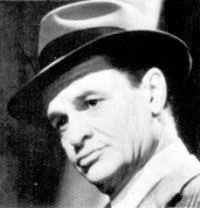I’d say anyone who really, really wants to exercise his right to carry a loaded weapon outside a presidential appearance is probably 1) angry, and 2) not blessed with good judgment. This reassures me!
Of all rights, the right to bear arms is the fucking stupidest. Arizona’s “open carry” law sounds like a delicious refinement on this stupidity.
Of course, whoever’s head finally pops may not take a shot at Obama, he may just spray the crowd. Or maybe nothing will happen — guessing is part of the fun.
update, At least he’s smiling. Note: This is the fellow that Allahpundit and Confederate Yankee thought might be pro-Obama because he was strolling with his loaded automatic weapon near people who had pro-health reform signs. What does the fellow himself say? “Taxation is theft.” So there goes the “both sides are packing” meme.
On a brighter note, he tells us, “We will forcefully resist people imposing their will on us through the strength of the majority with a vote.” If you lose an election, start shooting. (Via Talking Points Memo.)
[ added 8’20: The third photo and an accompanying thought: Did the guy change from a white shirt to a blue shirt during the rally? And for a lunatic he is one good-looking man. ]
update, So Uland calls me out in Comments with his views on gun control. He raises good points, so now I’ve expanded my thoughts. They’re presented here as responses to various bits taken from his comments, starting with:
“Is this post for me? Thank you.”
No! I’m just pissed and feeling vocal. But I can see how you might think it was a jab at you, so I apologize for that.
“First off, the right to carry that exists in some states is not a second amendment right . Related, of course, but those are distinct sets of policy in which special license is required.”
I know that! From my post: “Of all rights, the right to bear arms is the fucking stupidest. Arizona’s ‘open carry’ law sounds like a delicious refinement on this stupidity.” So I get the distinction.
“I don’t think they ‘want to’ carry guns around the president.”
Then they must be sleepwalking or under mind control. What you call symbolic is still a real action, and it’s an action that I very much dislike and resent. I don’t want my country’s political system at such immediate risk of destabilization thru violence.
“Since conceal/carry laws have been passed in many states, the crimes-with-firearms rates have not moved one way or the other.”
What about accidental shootings? And here I’m actually curious, not trying to pose a stumper.
My feeling: guns are fine in the right context, like a firing range or a hunting trip, or if they’re being handled by a security officer who’s been trained decently, but otherwise I don’t want them around. Especially if the person who’s the lynchpin of my country’s government is anywhere nearby. Doesn’t mean I want to ban guns; does mean I think it’s stupid to treat them as a right. If the 2nd Amendment ever gets offed, put me down for any regulations that would prevent spectacles like the one in Arizona.
A final point, an important one. Uland says of the gun fellow’s comment:
he’s saying that a majority cannot vote away the rights of a minority; that’s the premise of inalienable rights/Constitutional system.
First, because I haven’t heard the rest of the fellow’s comments, it’s possible that he was talking specifically about rights. But the quote in question does not specify the minority’s rights as being at stake. And, at any rate, the fellow believes that taxation is robbery, so what he considers a right may well be very different from what people of normal mental constitution might consider a right. So I stand by my summary of his position: When you lose an election, start shooting.
Second, he is definitely not saying only “that a majority cannot vote away the rights of a minority.” He is advocating the resolution of such situations thru force.
And, you know, we have a court system. That’s what it’s for. The guy seems to care about the Constitution as long as it puts a gun in his hands, and after that the law can go out the window. Maybe he’s an Eagle Scout, but he scares me and I don’t like what he’s saying.





